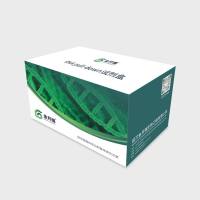Measurement of Protein Tyrosine Phosphorylation in T-Cell Subsets by Flow Cytometry
互联网
617
Stimulation of T lymphocytes, as induced by the interaction of their T-cell receptor with a peptide/MHC complex or by the use of anti-CD3 antibodies, triggers the activation of tyrosine kinases activities within a few seconds. This very early step leads to a series of biochemical events that include the expression of cytokine receptors (1–2 h), secretion of cytokines (5–6 h), DNA replication (24 h), and cell division (48 h). Phosphorylation of cellular substrates on tyrosine residues appears as the first detectable molecular event that hallmarks T-cell activation. It has been established that three nonreceptor protein kinases are implicated in this process. The first of these kinases to be identified is p56lck , which interacts physically and functionally with the CD4 and CD8 coreceptors. Indeed, T cells from mice deficient in the expression of this enzyme fail to display a biochemical response in response to antigen-receptor crosslinking (1 ,2 ). The second kinase identified is p59fyn , as demonstrated by the lack of TCR response when p59fyn activity is abrogated (3 ). Both Lck and Fyn are members of the src-family that are abundantly expressed in T lymphocytes. A third kinase belonging to the Syk-familly, ZAP-70, was shown to associate with the TCRζ homodimer through its SH2 domains (4 ,5 ). This association necessitates the previous phosphorylation of ITAMs (immuno-receptor tyrosine-based activation motifs) by both Lck (6 ) and Fyn (7 ). Activation of ZAP-70 is also of crucial importance for T-cell signaling as exemplified by the severe combined immunodeficiency observed on patients suffering from mutations in the ZAP-70 gene (8 ).





